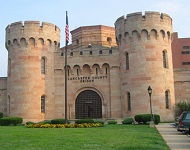
By Eric G. Bachman
Recently, I conducted an impromptu general fire service survey among a diverse group of fire service colleagues. The first question was, “How many classes of fire are there, and what are they?” The second question was, “How many classes of hazardous material are there, and what are they?” The third question was, “How many classes of construction are there, and how does each class react to fire or a special response consideration?”
The marks were high; most could readily recall the five classes of fire and name the appropriate extinguishing agent. A high percentage could also name thee nine hazardous materials classes. And all students named the standard five construction classes, providing accurate reaction predictions for exposure to fire.
I posed a fourth question: “Name the occupancy classifications and at least one characteristic or response consideration for each.” The responses varied, with many inconsistencies. So, why the disparity in recalling occupancy types as opposed to the topics of the previous three questions? My answer to that question is training. In most cases, the teaching of occupancy classes is not comprehensively introduced until a staffer delves into the code enforcement or inspection aspect of the fire service. In the volunteer fire service, code and fire inspection enforcement is likely not a part of the organization structure or authority. It is important to recognize the distinction between fire inspection and prefire planning. Fire inspection is evaluating specific code criteria to installed systems or equipment for the protection and egress of the facility occupants, such as the location of fire extinguishers. Preplanning includes identifying the facility layout, hazardous locations, utility infrastructure and controls as well as fire suppression mediums for the operational readiness of the fire department.
Training Drill: Occupancy Hazard Size-Up
Drill of the Week: Specific Occupancy Hazards
Reading A Building: Commercial Occupancy Building Styles
In my community, building and fire code enforcement is handled by a municipal office separate from the fire department. So, because the fire department is not involved in code enforcement and training curriculums lack comprehensive occupancy class review, most firefighters are not knowledgeable in these aspects. Like building construction types, learning the occupancy classes is necessary for understanding associated challenges and characteristics related to the occupancy layout and occupant demographics. Both of these elements are important considerations for emergency response.
Occupancy Class Sources
There are several sources that list and define occupancy types. Building and fire code books such as the International Fire Code (IFC) as well as National Fire Protection Association (NFPA) 101, Life Safety Code, contain sections outlining occupancy type parameters. Not intending to make you a code inspector or expert, certain occupancies present specific challenges that you must recognize and prepared for well before an incident. IFC and NFPA code books essentially mirror one another in the definition of each occupancy class. There can be some gray areas related to multiple and mixed occupancy settings as well as special structures which you must individually assess preincident.
For the purposes of preincident preparedness, occupancy classes should not just be limited to the structurally-built environment; it should include other protected elements such as transportation corridors, utility infrastructure, and natural venues. This article, however, will highlight the common occupancies in the built environment.
RELATED: Reeder on Occupancy Hazard Size-Up Drill ‖ Ciampo with Commercial Occupancy Tips ‖ Mittendorf on Commercial Occupancy Building Styles
There is some gray area associated with establishing a fixed number of occupancy classifications which can be correlated to the United States Department of Transportation hazardous materials classifications. Although most personnel can recall the nine hazardous material classes, several hazmat classes are subcategorized because of special hazards. Class 1 hazardous materials are explosives. However, there are six subdivisions which differentiate their detonation characteristics. Class 2 are gases, but Division 2.1 are flammable gases, Division 2.2 are nonflammable gases, and Division 2.3 are poisonous gases. As I will describe later, there are several associated occupancies under the overarching residential classification. In no particular order, the common occupancy classifications are provided below.
Assembly
The assembly occupancy classification regards facilities used for gathering purposes such as worship, eating and drinking, entertainment, and amusement by 50 or more people. Common assembly venues include churches, restaurants, and theaters (photo 1). When reviewing assembly occupancies, consider structural characteristics such as large open spaces that will not inhibit smoke and fire spread. You may need to implement large area search-and-rescue strategies and, depending on the disposition of seating, hoseline management can be a challenge.
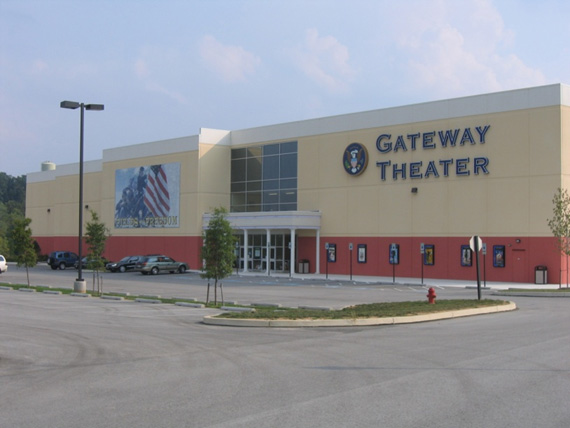
(1) This movie theater is an “assembly” occupancy. (Photos by author.)
Also consider the occupant demographics and dispositions. Certain assembly venues may target certain aged cliental who may have varied self-preservations levels. Their knowledge of the facility with regard to egress may be limited, which could result in panic and congested and blocked pathways. Accountability of occupants will be challenging.
Educational
The educational occupancy class regards facilities used for educational purposes through the 12th grade. There are other caveats related to the number of students and daily and weekly time parameters, but most staff correlate the educational occupancy to elementary, middle, and high schools (photo 2). Structural considerations include potentially expansive facilities that are compartmentalized. There may be specialized classrooms (chemistry labs) and other vocational areas (wood shop) which create additional hazards and fire loads. Search-and-rescue efforts and hoseline management will be challenging. Practiced fire drills will hopefully support more effective accountability.
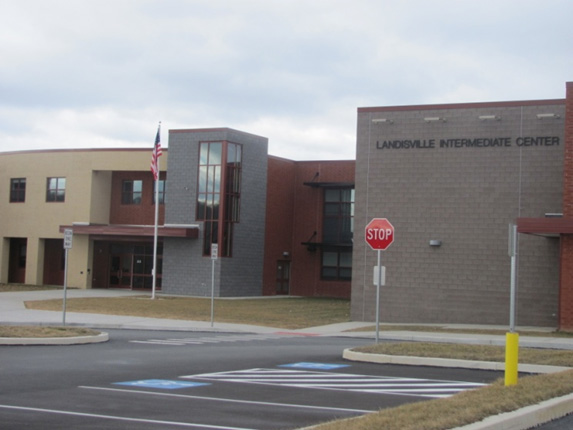
(2) This intermediate school is an “educational” occupancy.
Health Care
The health care occupancy class is intended for facilities that provide medical treatment or care. Codes such as NFPA 101 may prescribe minimum occupant numbers, but the most common heath care associations are hospitals (photo 3) and nursing homes. Structurally, there are many challenges such as compartmentalized treatment rooms, security, and hazardous elements such as X-ray and MRI. Occupants typically are in-patient and incapable of self-preservation because of their affliction, treatment, or security needs.

(3) This hospital is a “health care” occupancy.
Ambulatory Health Care
This is typically considered synonymous with the health care class noted above. Although similar, it is a stand-alone classification because the occupants are managed on an outpatient based. Structural attributes may mirror the health care descriptions above.
Detention/Correctional
The detention/correctional classification regards incarceration facilities such as prisons (photo 4). Structurally, these facilities are heavily reinforced with extraordinary security and restrictive occupant movement measures. The occupants are not in their own control, therefore their self-preservation abilities are hampered by special systems and restraints.
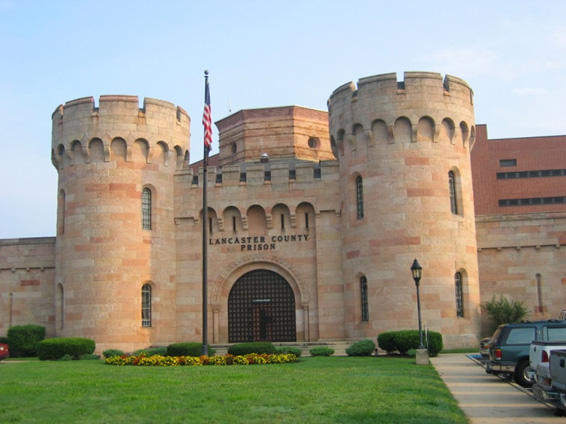
(4) This prison is a “detention/correctional” occupancy.
Mercantile
The mercantile classification regards venues that sell and display merchandise. Common examples include department stores and supermarkets (photo 5). Structurally, these sites are usually large open spaces that may have smaller incidental areas such as offices and storage and preparation areas. Display areas may be in the form of fixed shelving rows such as in a supermarket or movable racks like those found in a clothing department storage area. Challenges include limited access and obstacles inhibiting search and rescue and hoseline management. Occupant considerations include a varied census that can depend on the time of day or year. Wide ranging age varies with self-preservation and mobility capabilities that will create accountability issues.

(5) This supermarket is a “mercantile” occupancy.
Business
This classification typically is assigned to any facility that conducts business including the mercantile examples. However, this classification regards venues that conduct business transactions other than selling merchandise. Business examples include doctor offices, city/town halls, and general office settings. The interior arrangement of business occupancies vary. In a doctor office setting, compartmentalized treatment rooms will challenge search-and-rescue efforts. Other office settings may present an open plan format with numerous cubicle spaces. Smoke and fire spread will be not inhibited, and hoseline management around and through cubicle spaces will be challenging. The number of occupants are also likely tol be limited, but that depends on the venue.
Industrial
The industrial classification refers to facilities that manufacture products or which conducts other principle operations such as processing, packaging, or finishing. This is a broad classification that many assume to include large complexes such as refineries, factories, and food processing plants, but is also includes pumping stations and telephone switching venues. The challenges are infinite and require concentrated preparedness efforts to understand special processes, atmospheres, and materials. The occupant disposition likely is more structured for familiarity of the venue, a limited number of employees, and accountability.
Storage
The storage classification regards venues that have the primary purpose of housing merchandise, products, and other goods. Storage venues examples include warehouses, barns, and parking garages (photo 6). Structural characterizations are large spaces with variable hazards that present access and pathway challenges. Typically, the occupant load at storage occupancies is low.
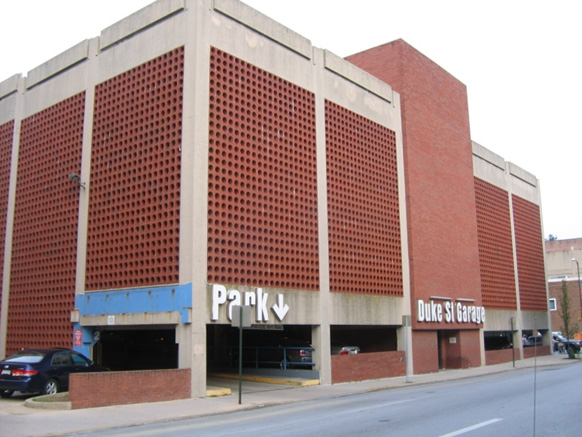
(6) A parking garage is a “storage” occupancy.
Residential
The residential classification, after revealing the examples, may create confusion or be controversial. However, the general purpose is the sleeping accommodations provision not inclusive of occupants at health care and detention venues. This broad definition includes single- and two-family dwellings, a rooming house (photo 7), apartment buildings, hotels, and dormitories. Certainly apartment buildings, hotels, and dormitories are unlike a single-facility dwelling. But like all of the other occupancy classifications, each must be evaluated for physical layouts and hazards as well as occupant dispositions. Occupants of a dwelling, a dormitory, or an apartment building are likely more familiar with the venue and alternate egress points. However, that may not be the case in rooming homes and hotels.
(7) This bed and breakfast is an example of a “rooming” house.
Residential Board and Care (RBC)
The RBC classification is separate from the broad residential class and regards lodging accommodations for unrelated people that may need certain personal care assistance and services. An example of this class is a group home. The occupants do not require medical care but may need assistance with other personal needs such as bathing and dressing. An RBC facility may be housed in a variety of settings. Some are special properties built as an RBC facility or a modified structure such as a dwelling. Structurally, each must be evaluated for layout and access. Coordinate occupant capabilities with supervisory staff to understand the occupants’ physical, emotional, and mental needs and tendencies.
Day Care
The day care classification regards caretaking venues not for the purposes of education or the non-RBC needs. Common examples are child and adult day care centers and nursery schools. Structural attributes will vary because licensed child day cares can operate in a specifically constructed facility (photo 8) and within a dwelling. Special outreach efforts are necessary to locate in-home day cares to ensure preparedness for emergencies. The occupant dispositions will vary, but (especially) in child/nursery school settings, the occupants have low self-preservation capabilities.

(8) This child care facility is an example of a day care center.
Other
Code books may also reference other occupancies such as mixed, multiple, and separated. However, the focus of this article was to illustrate the need to define general occupancy classes to correlate common preincident and emergency operations influencing considerations. So, the answer I was looking for to fourth question—“Name the occupancy classifications and at least one characteristic or response consideration for each”—was “12.” Most respondents could only recall an average of six.
There are gray areas of occupancy classification, and it not the intent of this article to steadfastly assert that you know all of the caveats. If you study them further after reviewing this article, do not get caught in the weeds of semantics. For example, the assembly occupancy regards a location for the gathering of 50 or more people such as restaurant. But for a restaurant with an occupant load of under 50, it would fall under the mercantile category. Does that really matter for the purposes of prepreparedness and incident response? Of course not. However, distinguishing the structural and occupant challenges and other inherent hazards of occupancy classes is important.
ERIC G. BACHMAN, CFPS, is a 33-year veteran of the fire service and a former chief of the Eden Volunteer Fire/Rescue Department in Lancaster County, Pennsylvania. He is the hazardous materials administrator for the County of Lancaster Emergency Management Agency and serves on the Local Emergency Planning Committee of Lancaster County. He is registered with the National Board on Fire Service Professional Qualifications as a fire officer IV, fire instructor III, hazardous materials technician, and hazardous materials incident commander. He has an associate degree in fire science and earned professional certification in emergency management through the state of Pennsylvania. He is also a volunteer firefighter with the West Hempfield (PA) Fire & Rescue Company.
- Transmission Pipeline Intelligence
- Old Buildings, New Challenges
- It Is What It Is, But What Is It?
-
Improving Facility Orientation
-
Closing the Information Gap
- MORE Intelligence
- All-Seasons Intelligence


